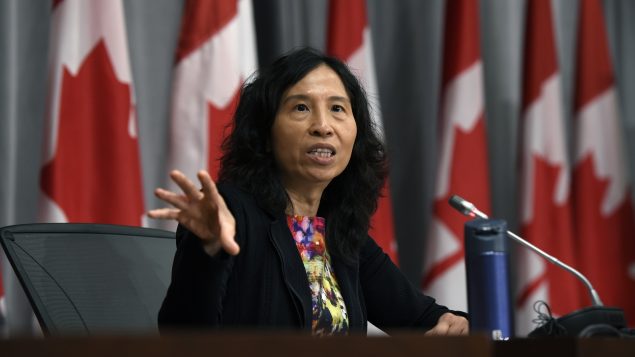Canada’s Chief Public Health Officer, Dr. Theresa Tam, urged Canadians to remain vigilant and warned against the feeling of “COVID-fatigue,” as the country registered 114,994 cases of the novel coronavirus and 8,912 deaths on Wednesday.
On the brighter side, Tam said 87 per cent of people who had contracted the virus have now recovered.
Labs across Canada have tested 3,899,000 people for COVID-19 to date, Tam said. Over the past week, health authorities have tested an average of 40,665 people a day, with about 1 per cent of those tests coming back positive and an average of 471 cases being reported daily across the country, she said.
Tam’s update came as several provinces have reported increases in the number of COVID-19 transmissions as governments move to lift pandemic restrictions and reopen the economy.
Health officials in Ontario, Canada’s most populous province, announced Wednesday that the country’s largest metropolitan area around Greater Toronto will relax some of the pandemic restrictions for activities such as indoor dining in restaurants, live performing arts shows and the reopening of movie theatres and playgrounds.
‘Wear a mask’

People wear face masks as they commute on a metro in Montreal, Sunday, July 12, 2020. Since July 13, Quebec has made masks mandatory for anyone riding on public transit, with the only exceptions being those who can’t wear one for health reasons. THE CANADIAN PRESS/Graham Hughes
Tam emphasized the need for physical distancing as one of the most effective ways to prevent the spread of COVID-19 as a semblance of normality returns.
“Nevertheless, I recognize that physical distancing is not without challenges, both socially as well as practically, especially at certain times and in certain settings,” Tam said.
“While there are ways we can stay socially connected, including by expanding and enriching our virtual connections, we also need to remember that physical distancing is not enough protection on its own when we are in closed spaces, crowded spaces or in close contact with people outside of our social bubble.”
In these situations, whether indoors or outdoors, people need to wear a non-medical mask or face covering, she repeated again.
Emotional toll of physical distancing
All these layers of protection and physical distancing can leave us all feeling a bit of what’s been described as “COVID-fatigue,” she said.
“For many, there are emotional and psychological implications of staying physically apart from others that can lead to feelings of loneliness and social isolation,” Tam said. “To address this, remember that you can practice physical distancing, but still be social.”
She urged Canadians to continue reaching out to people living alone or away from family members or loved ones.
“This is an opportunity for younger Canadians and others who are familiar with social media and virtual platforms to reach out and help others in your family or community who may not be as tech savvy,” she said.
Mental health resources are available for those who are experiencing social, mental or emotional challenges associated with the difficulties and pressures of the COVID-19 pandemic, Tam said.
“Physical distancing should not mean emotional distancing,” she said. “During this pandemic, we should all try our very best to stay connected – even while staying physically apart.”







For reasons beyond our control, and for an undetermined period of time, our comment section is now closed. However, our social networks remain open to your contributions.